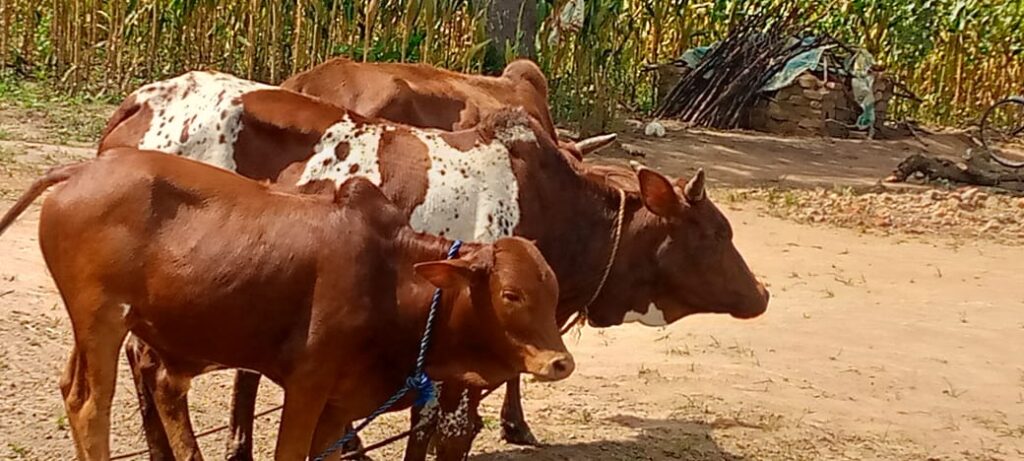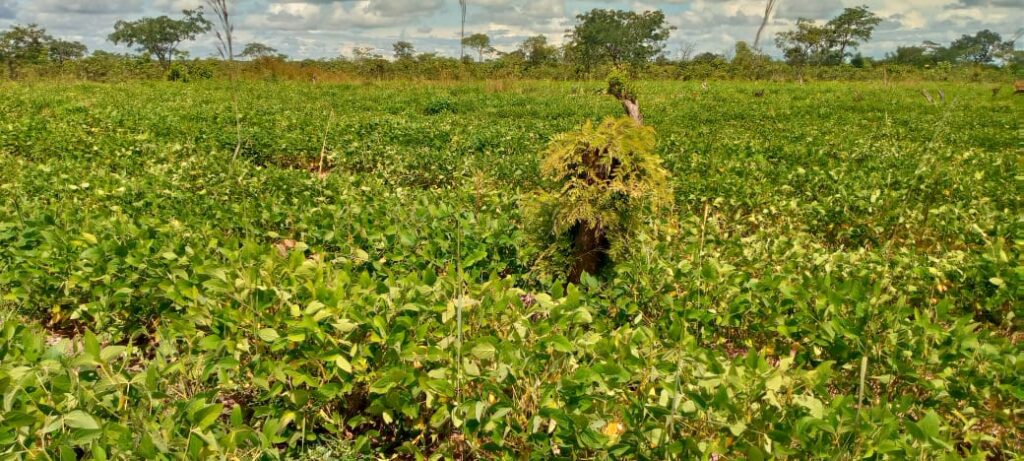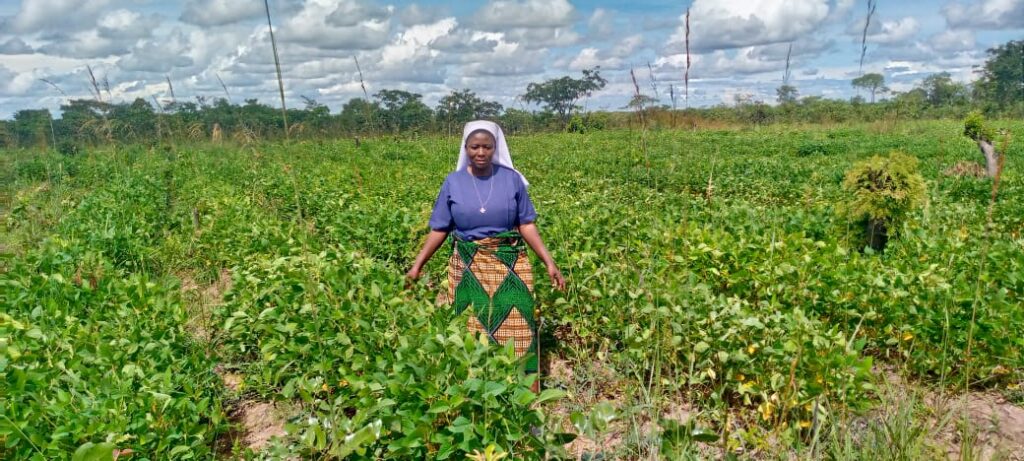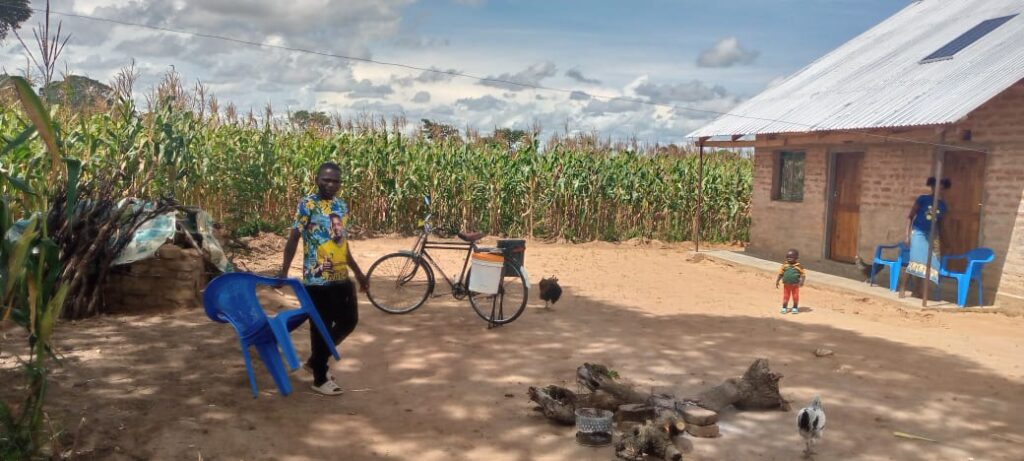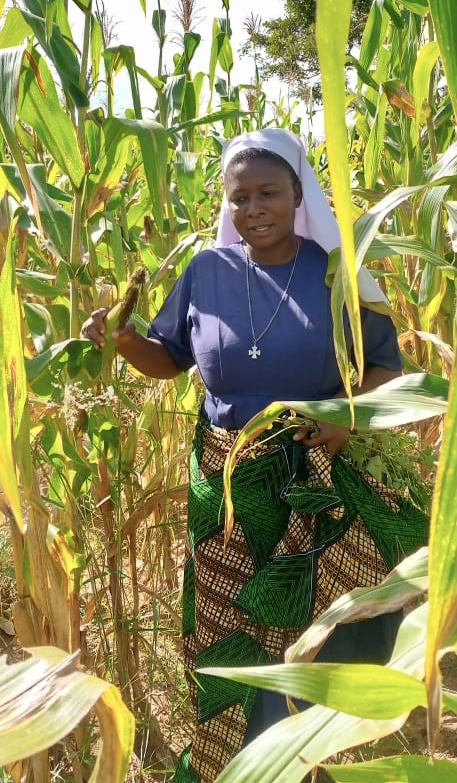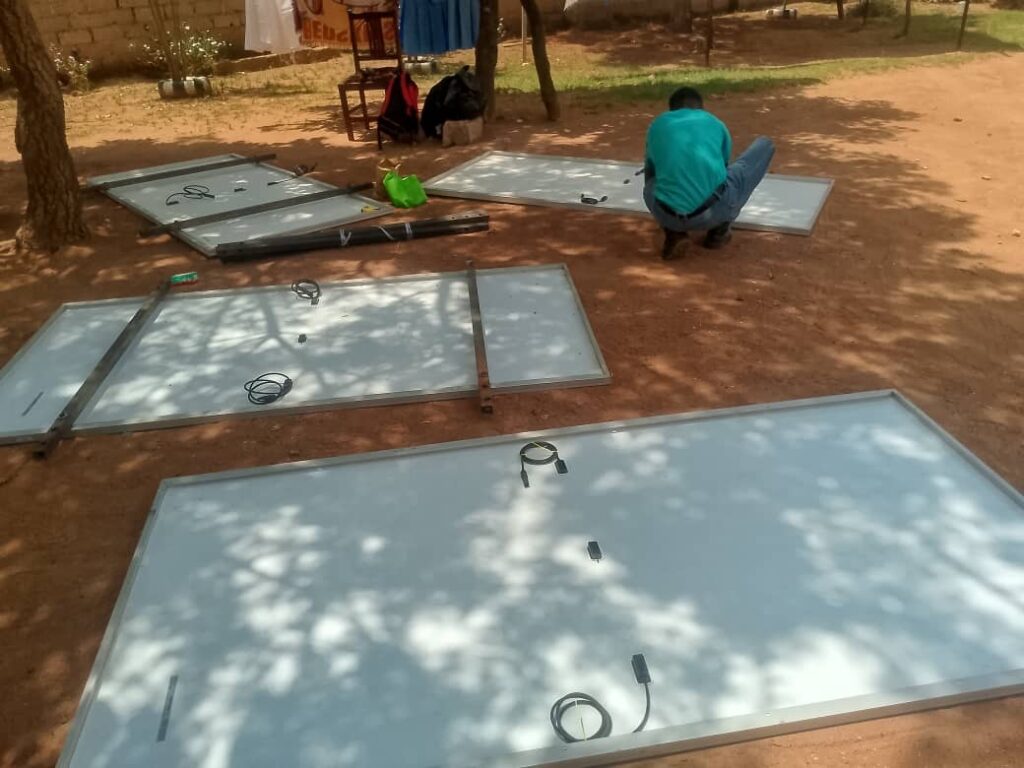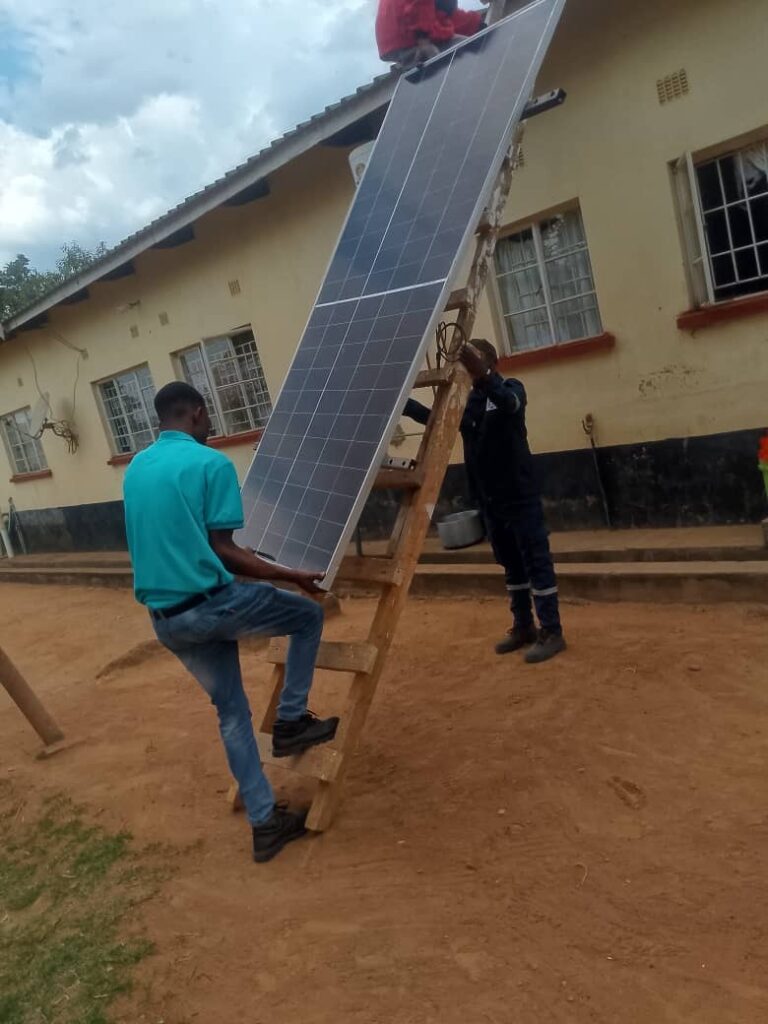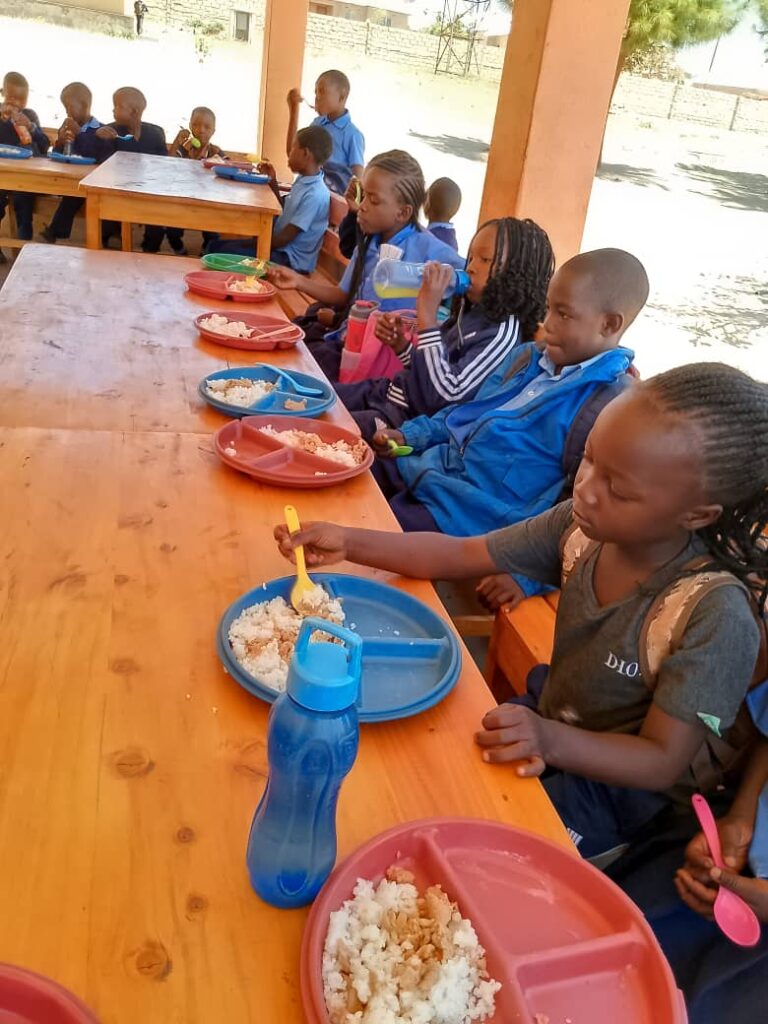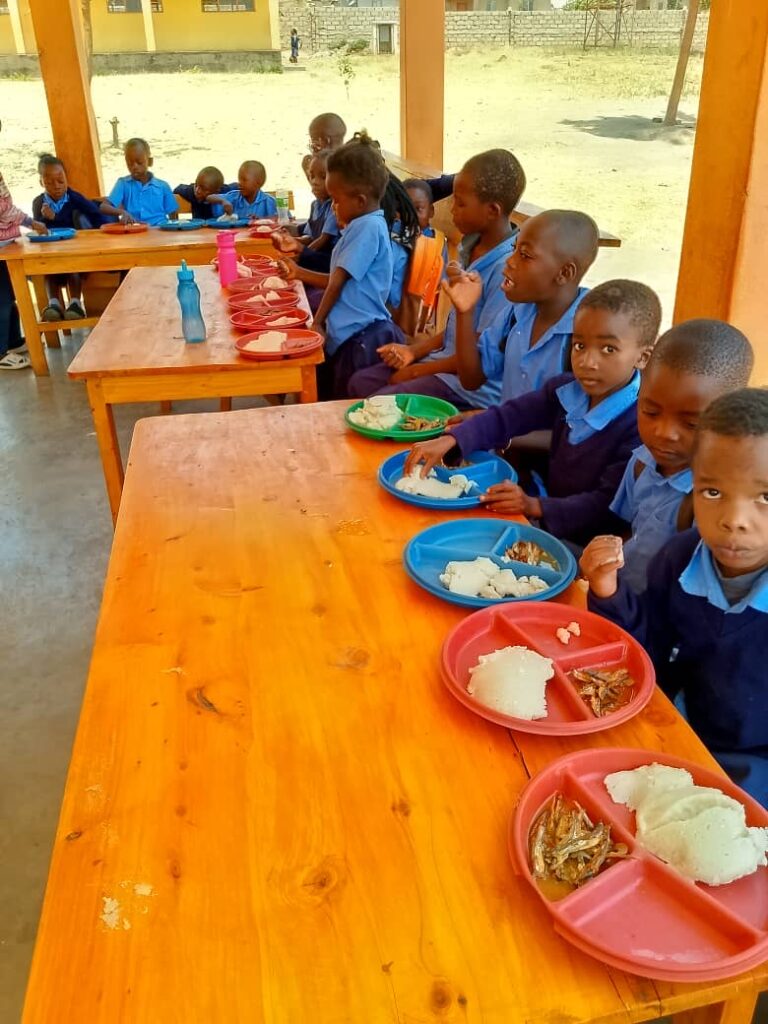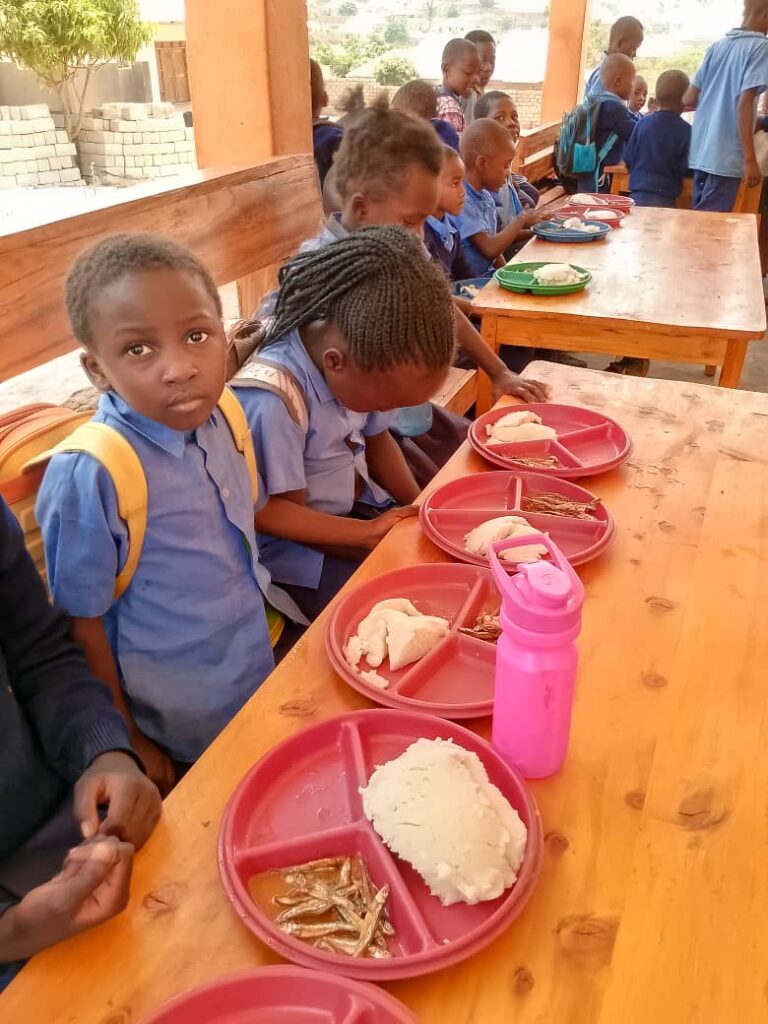November 2024
FINANCIAL REPORT 2024 and BUDGETS for 2025
Sister Florence Nawale, who is a qualified accountant, is meticulous in her preparation of the financial reports and budgets.
Financial report 2024
Thanks to donations and the proceeds from our income generating projects we have been able to run the 2 schools at St Mary’s and St Margaret’s in Nakonde as well as the 2 farms at Mayembe during 2024.
This included providing breakfast and lunch for 100 orphans and vulnerable children at St Mary’s and 90 orphans and vulnerable children at St Margaret’s so a total of 190 children.
Income generating projects
Our 2 farms and vegetable gardens provide much of the food for our feeding programme. In addition, the sale of produce from our farms (maize, chickens, fish etc) and the sale of uniforms have generated approximately €4,612.
Investment in a solar system at St Mary’s
There are many problems with power outages all over Zambia with the result that people are often without electricity for anything up to 3 days. In fact, recently we had a freezer stocked with food go to ruin.
Zambia depends heavily on electricity generated by the Kariba dam which, in theory, should supply more than 80% of the country’s demand. However, recent droughts have had a very negative impact.
After much consideration we decided to invest in a 3kw solar system, including 2 batteries, which has recently been installed at the Sisters’ convent at St Mary’s. The convent was chosen for security reasons. Nakonde is a town on the Zambia/Tanzania border and the crime rate is high.
Now we should have uninterrupted electricity for our fridges and freezer which are vital for our feeding programme.
Tables and benches for dining area St Margaret’s
All the necessary benches and tables for the dining area next to the kitchen at St Margaret’s are in place. They were all made by local carpenters.
BUDGETS 2025
ST MARY’S OVC (Orphans and Vulnerable Children)
During the academic year 2025 we will be providing breakfast and lunch for more than 100 orphans/vulnerable children. All the children at St Mary’s are OVC.
The 2025 budget for St Mary’s is divided into:
– Food programme – breakfast and lunch
– Staff – the annual salaries of 3 teachers, 1 cook, 1 general worker, 2 farm caretakers and admin/accountant
– School fees at boarding schools for 4 pupils
Two pupils will attend grade 10 and two pupils will attend grade 12 at senior high school. Grade 12 is the last year of secondary school education.
– Teacher training course – Sister Kalenga
– Farming costs – fertilizer, seeds, clearing and weeding, harvesting etc
– Learning materials and school requirements for local children who are particularly vulnerable
– Other costs – electricity, repair and maintenance, transport etc.
The cost of living has increased significantly, therefore we have decided to increase the teachers’ salaries at St Mary’s. The teachers at St Mary’s are referred to as “volunteer” teachers but they are paid a basic wage which includes gratuity and insurance. Labour laws are strict in Zambia.
Teachers prefer to work at government schools as the salary is much higher but the working conditions are often more challenging and there can be up to 100 children in a class.
ST MARGARET’S PRESCHOOL/PRIMARY SCHOOL
When the school first opened in January 2023 there were 2 Early Childhood Education (ECE) classes (nursery and reception) and grades 1, 2, 3 primary school classes.
In 2024 there was a new intake of nursery school pupils and the other classes moved up a level, so we had 2 ECE classes and grades 1, 2, 3, 4 primary school classes.
In 2025 there will be 2 ECE classes and grades 1, 2, 3, 4, 5 primary school classes.
In 2026 there will be 2 ECE classes and grades 1, 2, 3, 4, 5, 6 primary school classes.
Finally in 2027 the school will be complete with 2 ECE classes and 1, 2, 3, 4, 5, 6, 7 primary school classes.
During the academic year 2025, out of the total number of pupils attending the 7 classes, (2 ECE and 5 primary school classes), we will be providing breakfast and lunch for 120 orphans and vulnerable children.
The 2025 budget for St Margaret’s is divided into:
– Food programme – breakfast and lunch
– Staff – the annual salaries of 3 teachers, 1 cook, 1 general worker and admin/accountant
– Learning materials
– Other costs – electricity, repair and maintenance, transport etc
A supplement of €30 per child will be necessary in order to provide breakfast and lunch for a total of 220 orphans/vulnerable children (100 at St Mary’s and 120 at St Margaret’s) for the academic year 2025.
CELEBRATING 60 YEARS OF INDEPENDENCE
On 24th October Zambia celebrated 60 years of independence. Zambia is one of the most peaceful countries in Africa. The children at St Mary’s dressed in tribal clothes and there was plenty of singing and dancing.
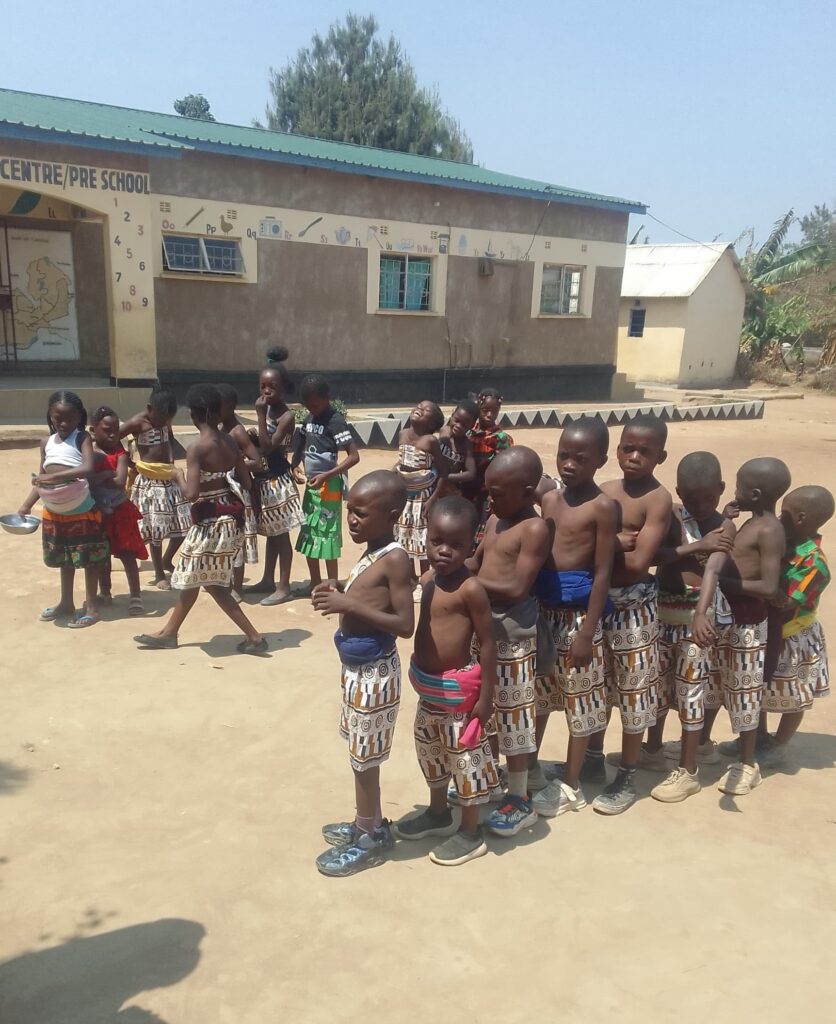
CAREERS DAY
On 19th July St Margaret’s school held a “Careers Day”.
People from different professions, for example a doctor, a nurse, a policeman, a journalist, a soldier etc, came to the school to talk about their professions and inspire the children to think about their future careers.
The children also dressed up as nurses, doctors, policemen/women
The families were invited to take part too.
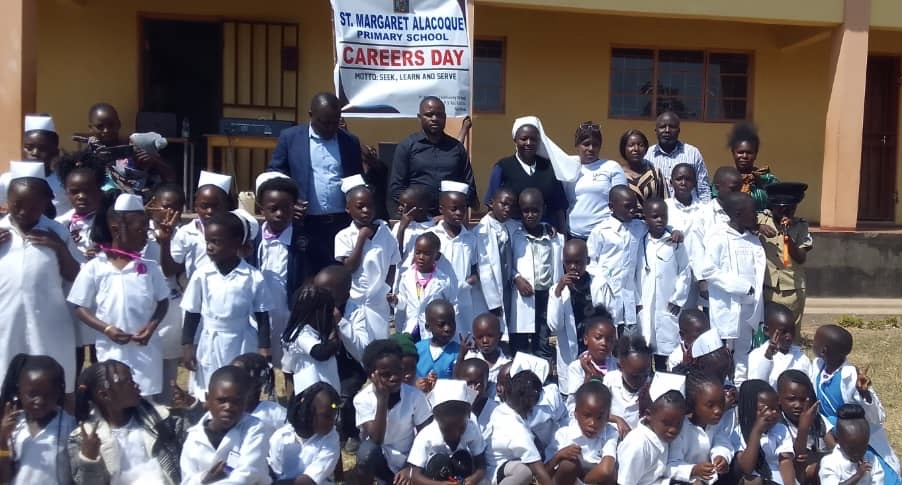
DEVELOPMENTS IN 2025
St Margaret’s preschool/primary school
Thanks to funding from the Bridge of Friendship, a 3 classroom block will be built at St Margaret’s during the year.
As was mentioned in a previous update, because the government had introduced a new law that 2 ECE (early child education) classes must be part of the primary school system we found ourselves 2 classrooms short.
With the addition of these 3 classrooms the school will fully satisfy the requirements to qualify as a government aided school.
The third classroom can be used as a multipurpose room – a library or a computer room for example. Our dining area next to the kitchen is open-air so the room could also be used as a dining room if necessary, for example when there is bad weather.
There will also be a storage room.
These rooms will then need to be equipped and furnished.
St Mary’s OVC
A new 3 classroom block is also planned for St Mary’s.
However, in the case of St Mary’s this is work in progress and we need to be guided by the local education officer in order to find the best solution as space is limited.
The 2 Farms at Mayembe
More land will be cleared and cultivated. As always the main crop will be maize.
Last season we were fortunate as the rains were favourable in the Nakonde area. Unfortunately many areas in the rest of the country experienced a severe drought resulting in very poor harvests.
The rainy season is from mid November to April.
OUR PROGRESS SINCE 2008
It’s always important to remember how much has been achieved since the idea first originated in 2008.
The parishioners at St Mary’s and St Margaret’s are very active and do an amazing amount of work. They are the people at the grassroots who get things done, make things work. We are guided by them.
Every year we strive to increase the revenue from our income generating projects. However, as explained before, every year we have extra classes resulting in more children to feed.
JULY 2024
Visit to Nakonde by Bridge of Friendship (BoF) representatives Klaus and Kornelia in June
Klaus Brachat and Kornelia from the BoF paid a visit to the OVC centre at St Mary’s and the pre-school/primary school at St Margaret’s in Nakonde in June.
They also visited the 2 farms at Mayembe.
St Margaret’s pre-school/primary school
The BoF had financed the building of the pre-school/primary school at St Margaret’s and it was important for them to inspect the final result.
In Zambia there are 7 grades in the primary school. In the original plan there was one block with 3 classrooms and a second block with 4 classrooms. However, the government then decided that every primary school should include 2 classes for ECE (early childhood education) so we found ourselves 2 classrooms short.
The BoF has offered to fund the construction of these 2 classrooms. A local building company will carry out the work.
During this 2024 academic school year there are 6 classes at St Margaret’s: 2 ECE classes, grade 1, grade 2, grade 3 and grade 4 with a total of 220 pupils.
The children come from mixed backgrounds – only the orphans and vulnerable children are part of the feeding programme and receive breakfast and lunch daily.
In 2025 a grade 5 class will be added then grade 6 in 2026 and grade 7 in 2027 will complete the school.
Some extra plumbing work needs to be carried out on the toilets and water kiosk.
One of our pupils won first prize in Maths in a primary schools competition in the Nakonde district, the Olympiads. His name is Gentleness. A proud moment for everyone.
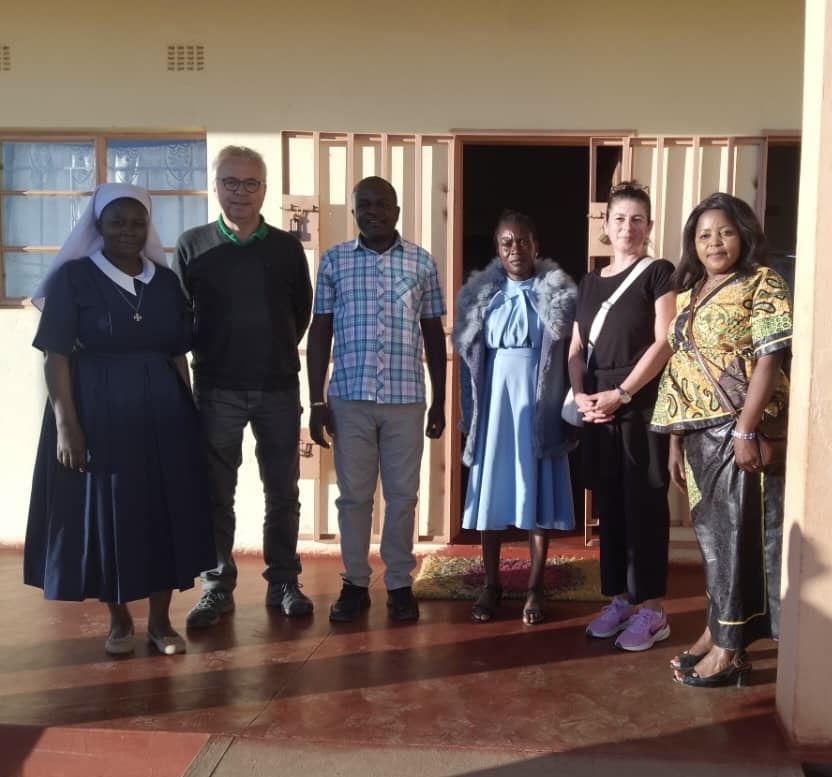
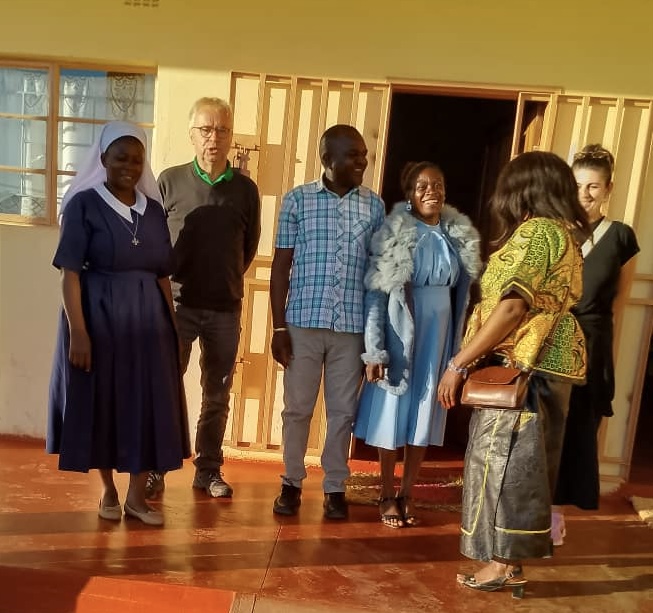
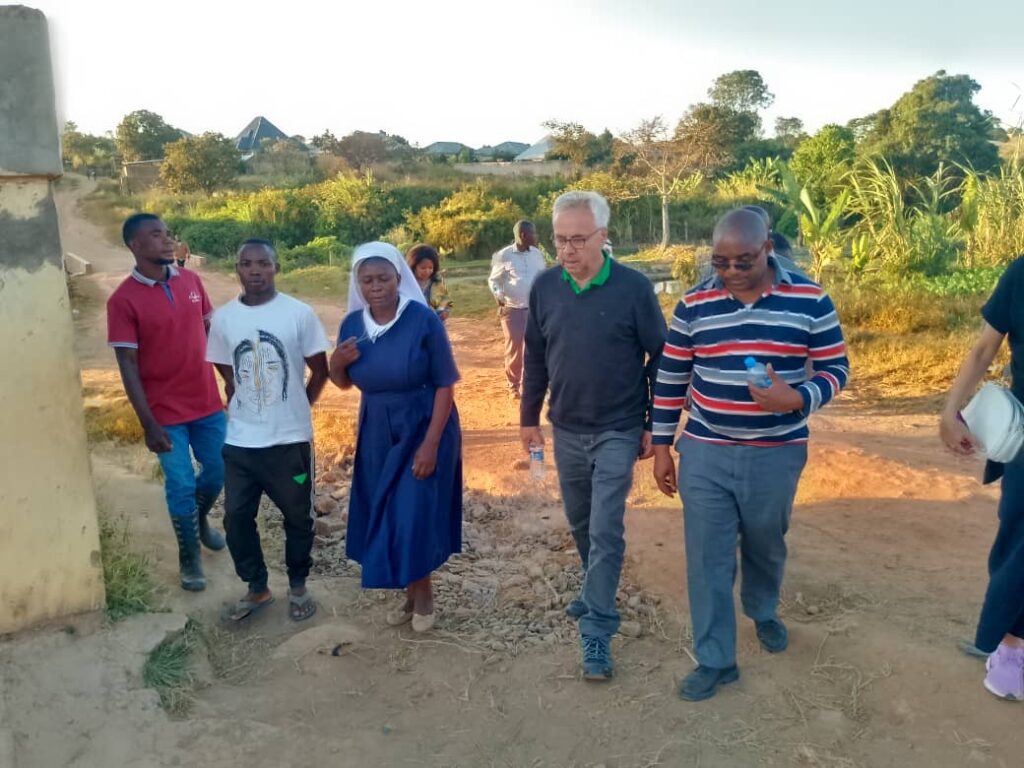
St. Mary’s OVC centre
The BoF has very kindly offered to finance the construction of two more classrooms at St Mary’s centre. A local construction company will carry out the work.
During this 2024 academic year there are 3 classes at St Mary’s: one ECE class, grade 1 and grade 2 with a total of 100 children who are all orphans or vulnerable children.
We realise that by adding 2 extra classrooms to St Mary’s to accomodate grade 3 and grade 4 we will have more children to feed and two more teacher salaries to pay. But it also means our children, who are particularly vulnerable, will benefit from 2 more years of regular meals and valuable education.
Because of lack of space we will be unable to expand the centre even further.
Ideally we would need a bus to transport these children to St Margaret’s when they finish grade 4 but that is an expense we cannot afford for now. So at the moment when the children finish at St Mary’s they then go to the nearest government schools where there are more than 100 children per class, very few desks and limited learning materials.
The BBC published an interesting article about this problem on 14th July 2024.
Zambia made education free, now classrooms are crammed.
https://www.bbc.com/news/articles/cek9n3yv0llo
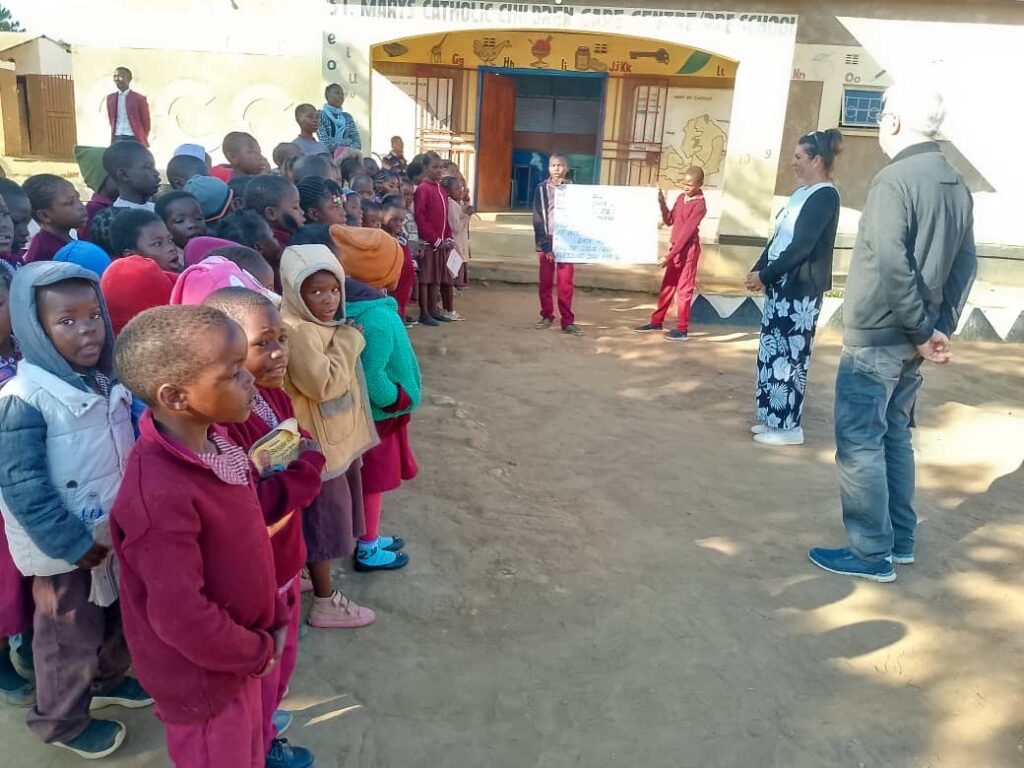
The farms at MAYEMBE
The new farmhouse at farm 1 has been completed.
We are very satisfied with the maize production this year. As I said in a previous update most of Zambia was hit by a drought this year but fortunately in Nakonde the rains were favourable.
- Farm 1 produced 278 bags of mealie meali (maize flour), each bag is 50 kgs. Farm 2, the new farm, produced 68 bags, each bag 50 kgs so a total of 17,300 kgs of mealie meal. In 2019 we produced 3,900 kgs.
Each year more land at the new farm, farm 2, will be cleared and cultivated.
We also produced 200 kgs of soya beans and 120 kgs of groundnuts. However, sunflower and beans didn’t do so well this year – farming is never easy! - The fish will be harvested in September.
- Poultry – we have limited the number of chickens being reared because the cost of chicken feed has increased so much.
- As well as the vegetable garden at St Mary’s, Sister Florence is now cultivating a vegetable garden at St Margaret’s too.
- The benches and tables are being prepared for the dining area at St Margaret’s.
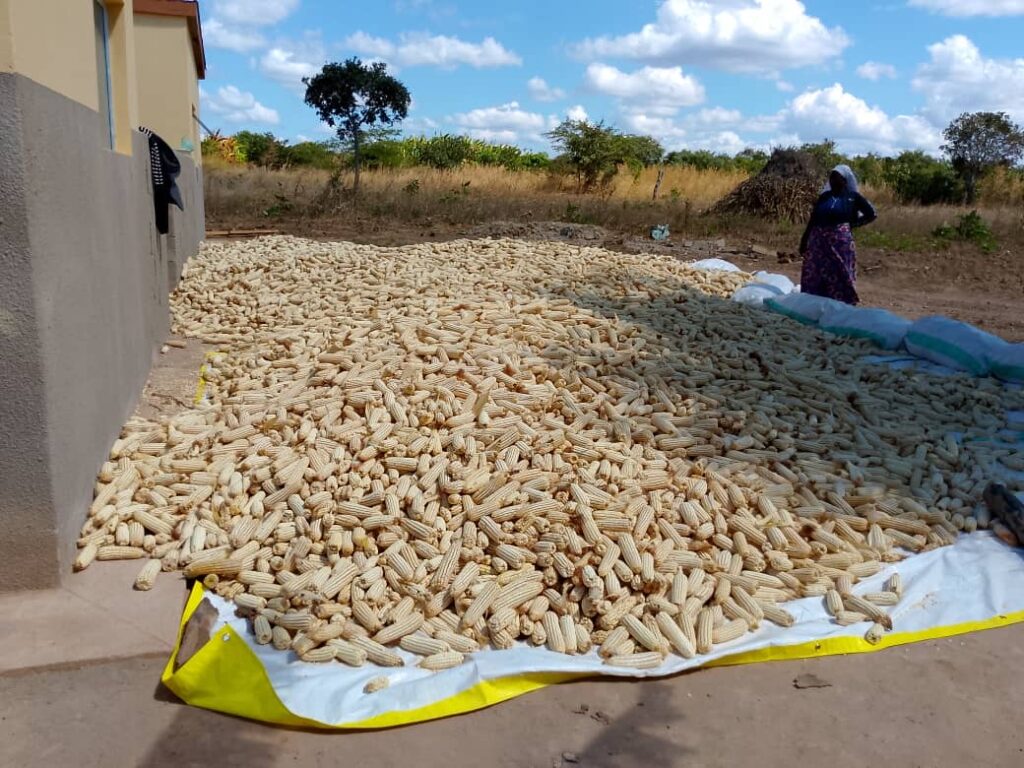
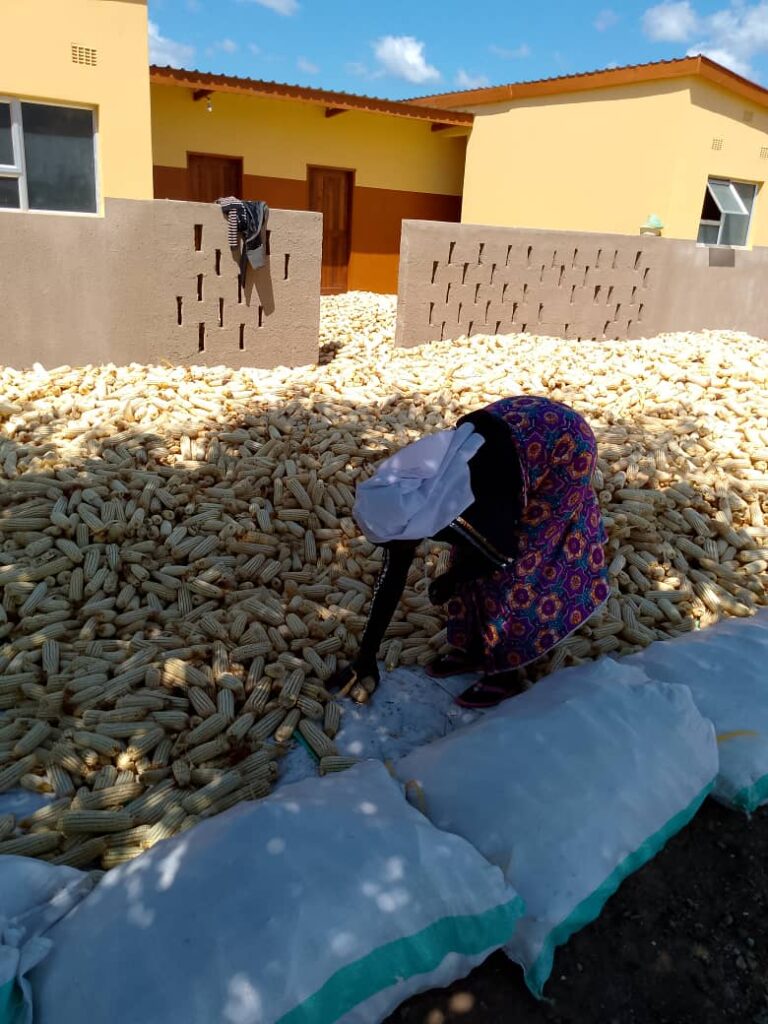
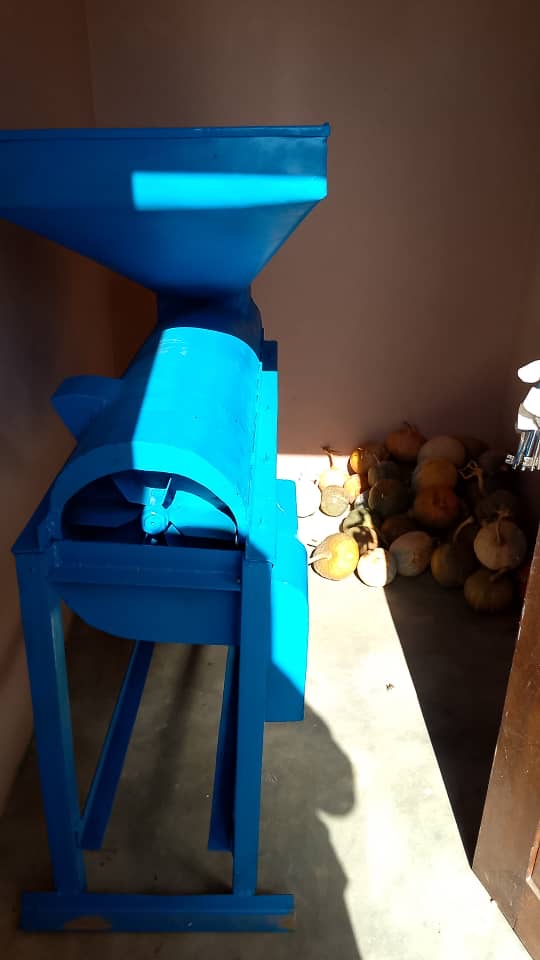
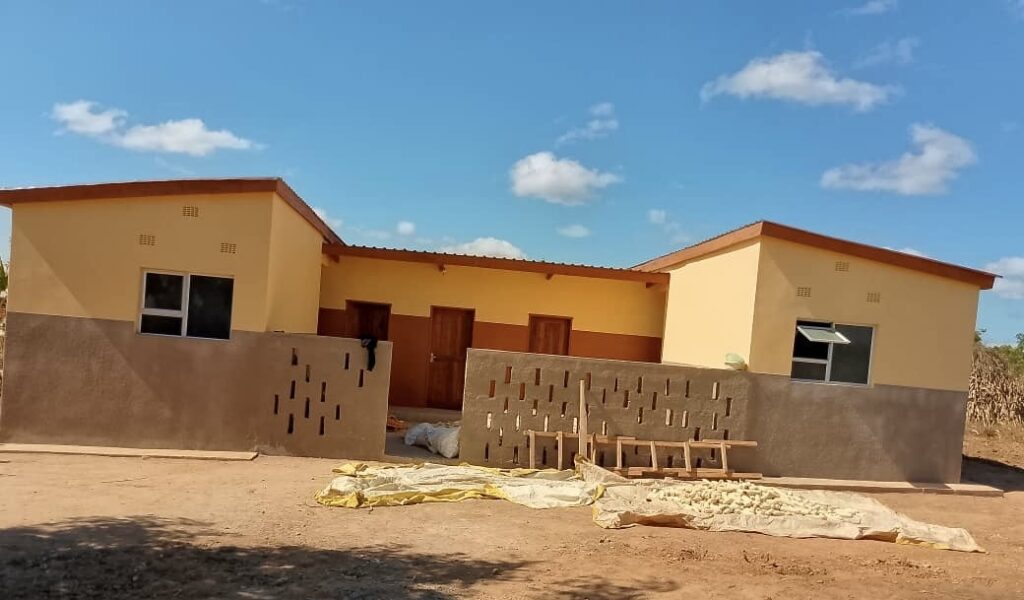
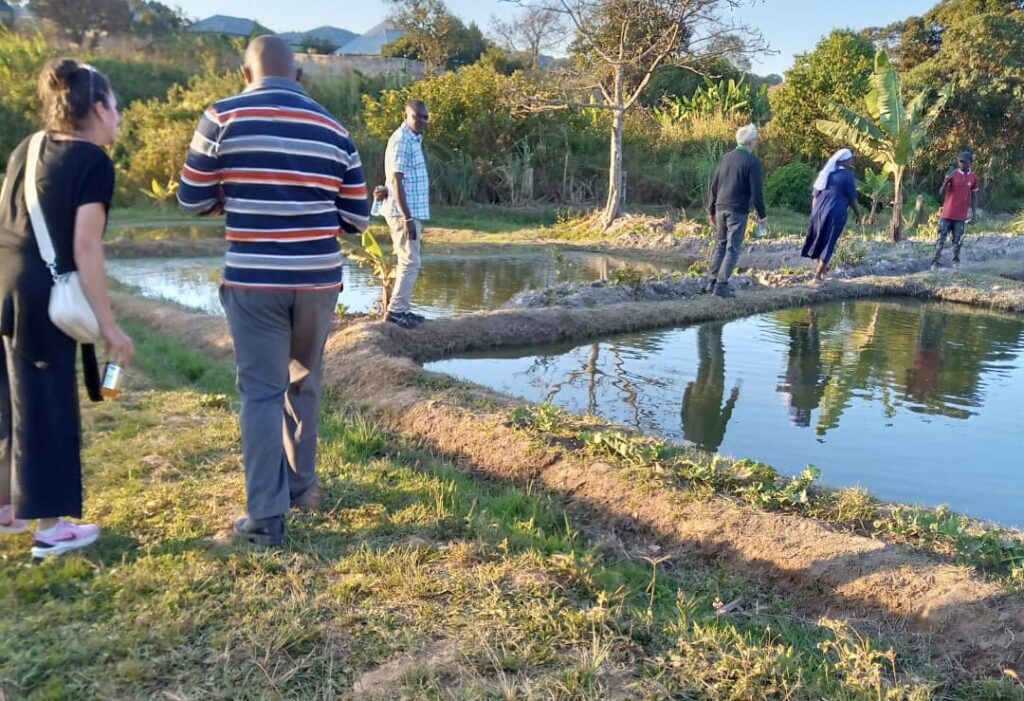
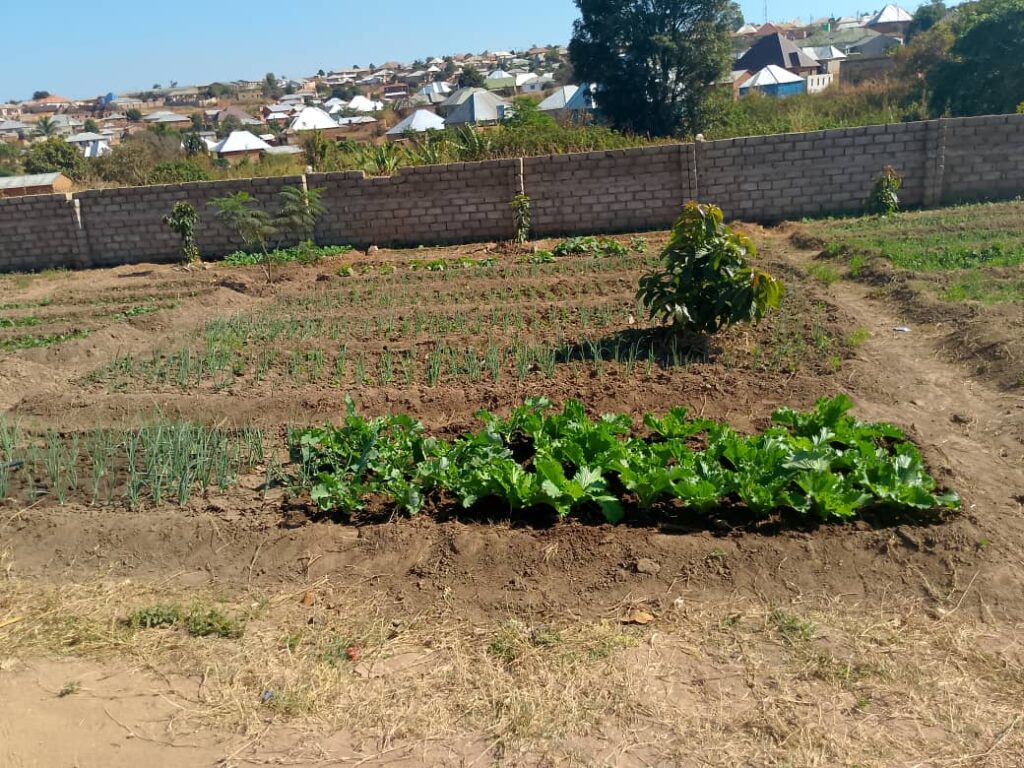
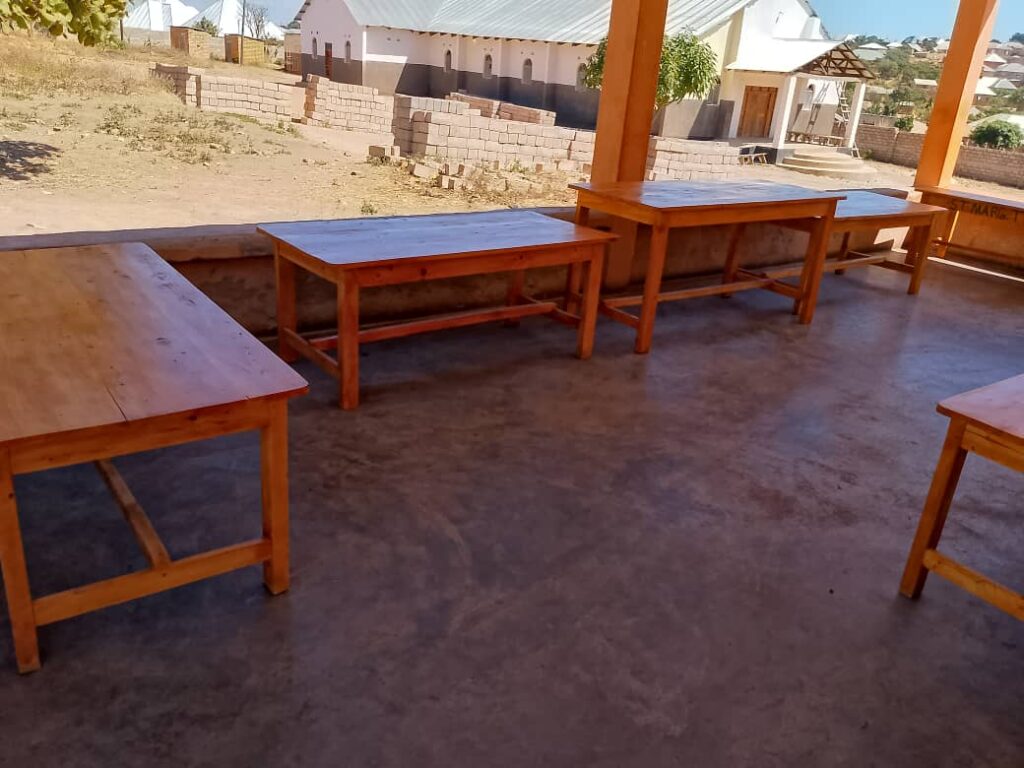
Future Funding
It’s too early to prepare the budgets for next year but the 3 main categories of expenditure will be:
1) The feeding programme.
2) Furnish and equip the new classrooms at both schools.
3) Salaries – includes all the teachers’ salaries at St Mary’s and also those of a few teachers at St Margaret’s.
When the school at St Margaret’s is officially a government aided school, hopefully in 2025, all their teachers’ salaries will be paid by the government. However, St Mary’s will always be our total responsibility.
We also have the 2 farmers’ salaries as well as those of other workers and cooks.
March 2024
Opening of new school year 2024
The new academic year should have started on 8th January but due to a surge in the number of cases of cholera in the country, the Zambian government decided to postpone the opening date to 12th February.
As already seen during covid, when schools were forced to close, our vulnerable children suffered the most because they were unable to benefit from the food that we provide on a daily basis.
St Mary’s Child Care Centre
We obtained permission from the local education authorities to add an extra class at the centre. In order to do this we divided one of the classrooms in two. This new room accomodates the grade 2 children. Therefore we have:
an ECE (early child education) class with 35 pupils
a grade 1 class with 32 pupils
a grade 2 class with 33 pupils
Total of 100 pupils – 60 boys and 40 girls
All the children at St Mary’s are either orphans (50 double orphans and 9 single orphans) or come from particularly vulnerable backgrounds.
Two of the main challenges are late coming and absenteeism.
Late coming is understandable when you realise the number of kilometers that some of these very young children have to walk, between 2 and 6 kms. The teachers are aware of this.
Absenteeism – there are many reasons for this including the long distances many children have to walk. However, many orphans who live with their guardians (for example extended family members who are often elderly) are expected to do various daily chores which take priority over going to school.
With the addition of grade 2 we now need to have 8 tables and 12 benches made for the classroom. This will cost approximately €460.
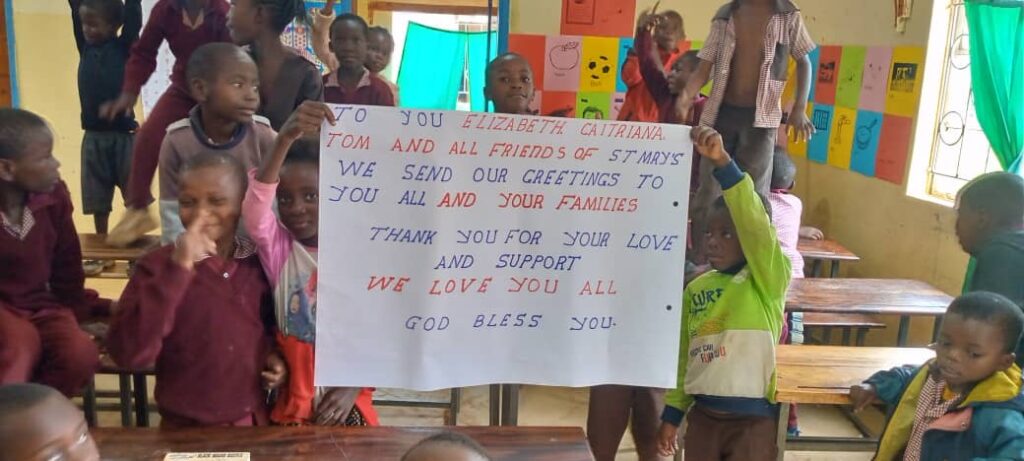
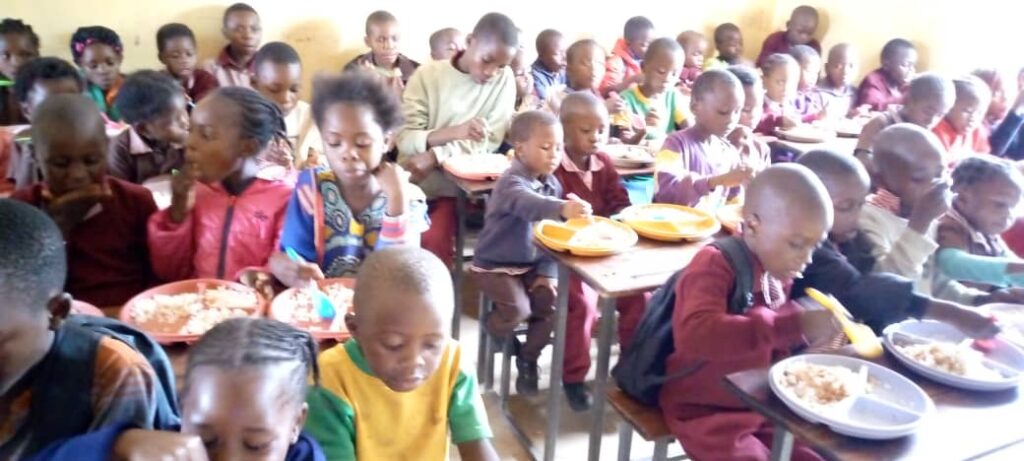
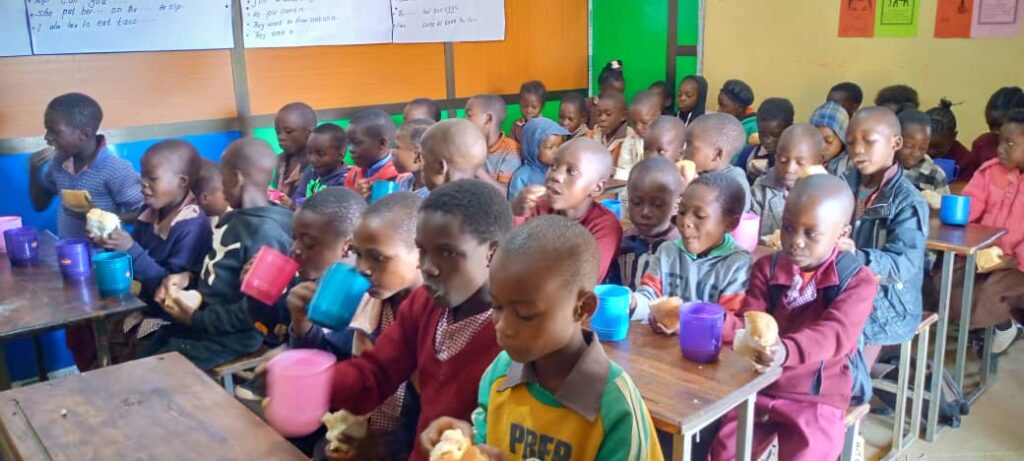
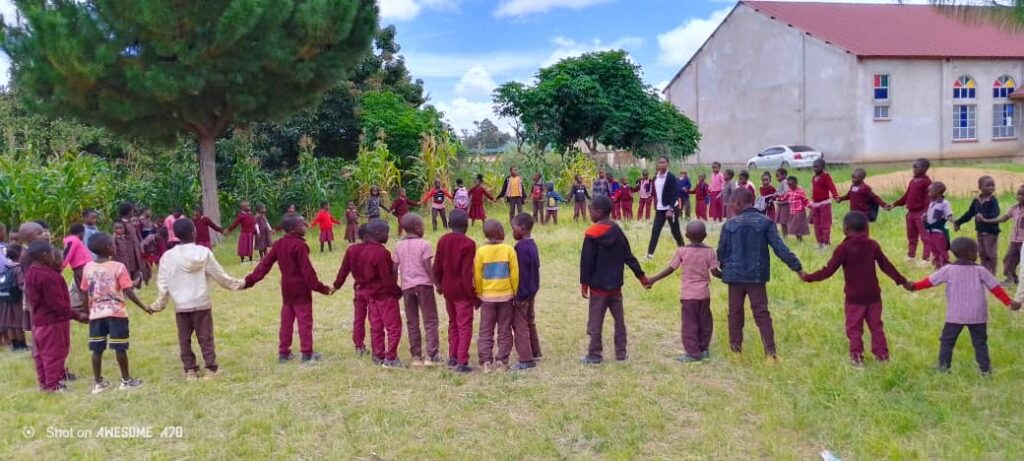
Christmas surprise
The children had a very pleasant surprise at Christmas. Doctor Munkonge – originally from the Nakonde area – and his family prepared not only a surprise Christmas lunch for the children but also fireworks! The children, needless to say, were thrilled!
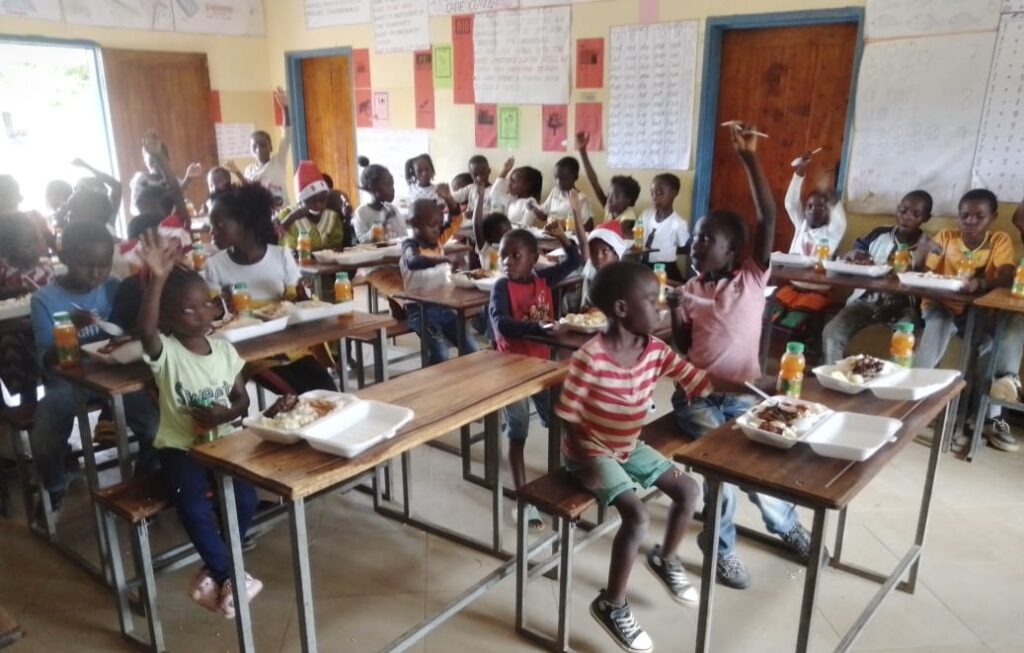
St Margaret’s school
The headmaster, Mr Prince Mulenga, confirmed that the orphans and vulnerable children in grades 2 and 3 are still among the best performing pupils at St Margaret’s.
Also at St Margaret’s late coming and absenteeism are the main challenges the teachers have to face.
We are having 14 foldable tables and 32 benches made for the dining area next to the kitchen. This will cost approximately €1,000.
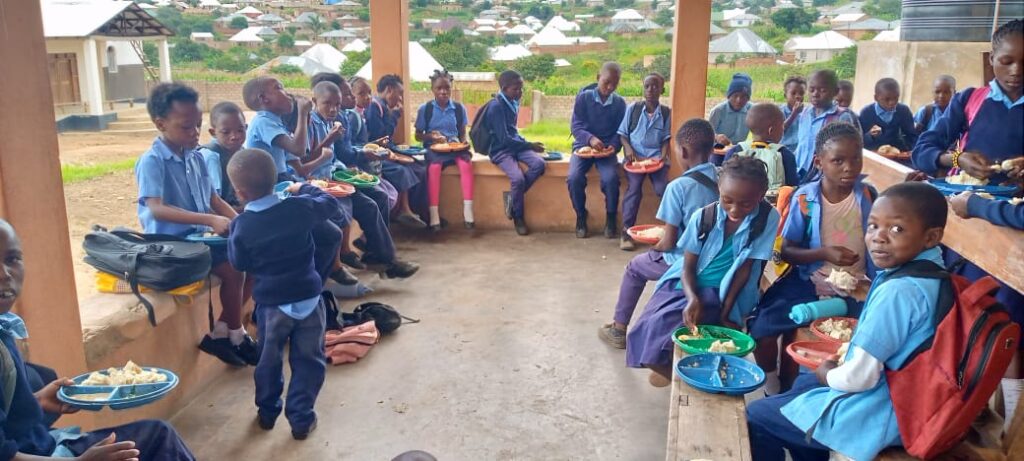
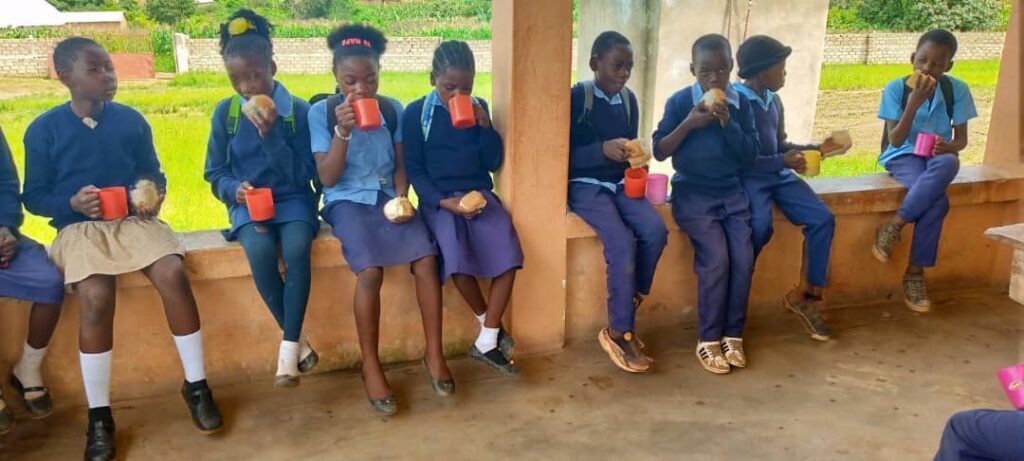
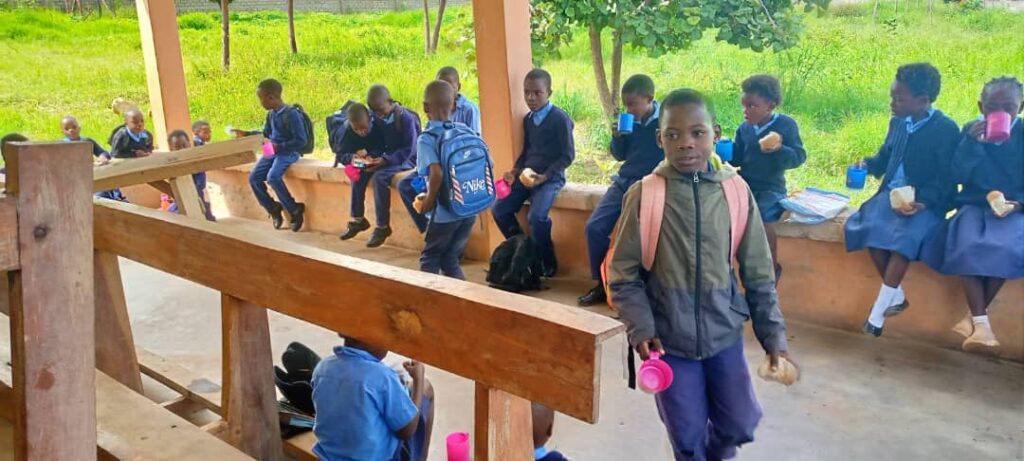
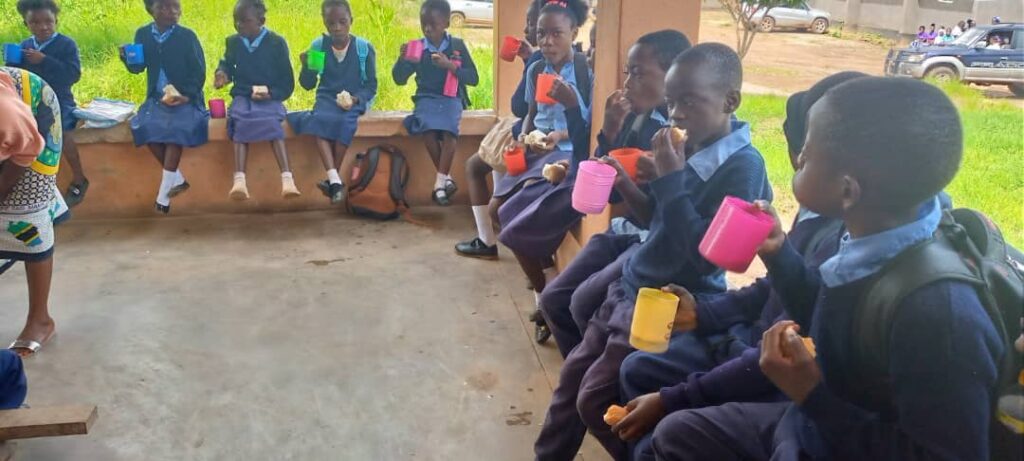
The school is still waiting to become a government aided school which means there’s a constant struggle to pay the salaries of some staff members including two security guards and a caretaker. At the moment they are depending on contributions from parents.
The Farms at Mayembe
Following the deadly outbreak of cholera Zambia then had to face an emergency drought situation in 86 of its 116 districts. The drought destroyed 1 million hectares of the 2.2 million hectares planted with the staple crop maize.
Fortunately in the Nakonde district the rains have been favourable. We have enough mealie meal (maize flour) from our harvest in 2023 to feed all the vulnerable children at both schools until August. By that stage we will have harvested the new crop.
We now have 3 cattle as well as the goats.
At St Mary’s we are rearing 200 chickens plus other poultry, including turkeys.
As well as maize we have sweet potatoes, soya beans and groundnuts. However, our sunflowers did not do well this year.
We should have a better production of fish this year.
